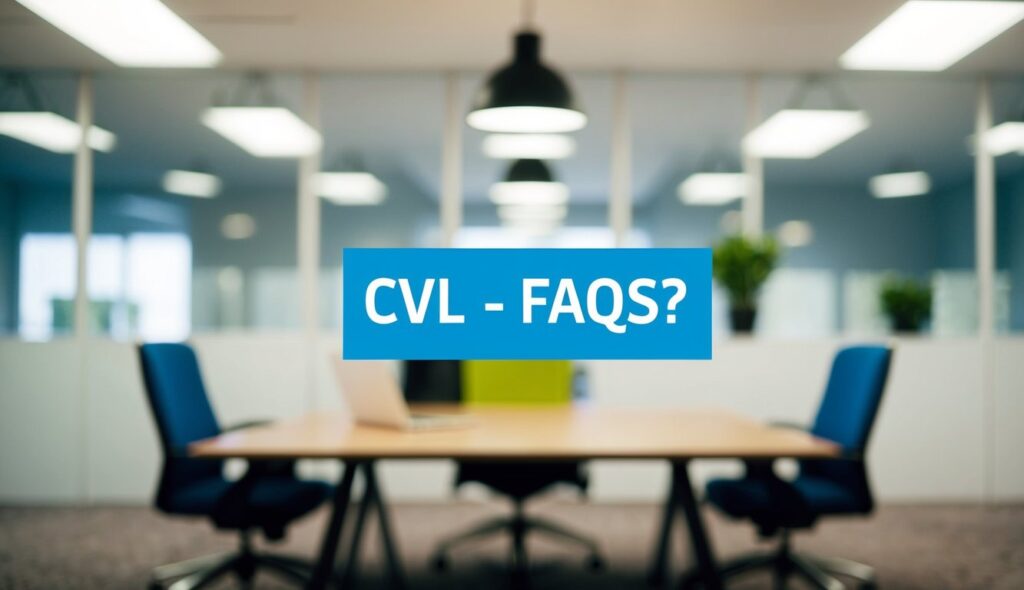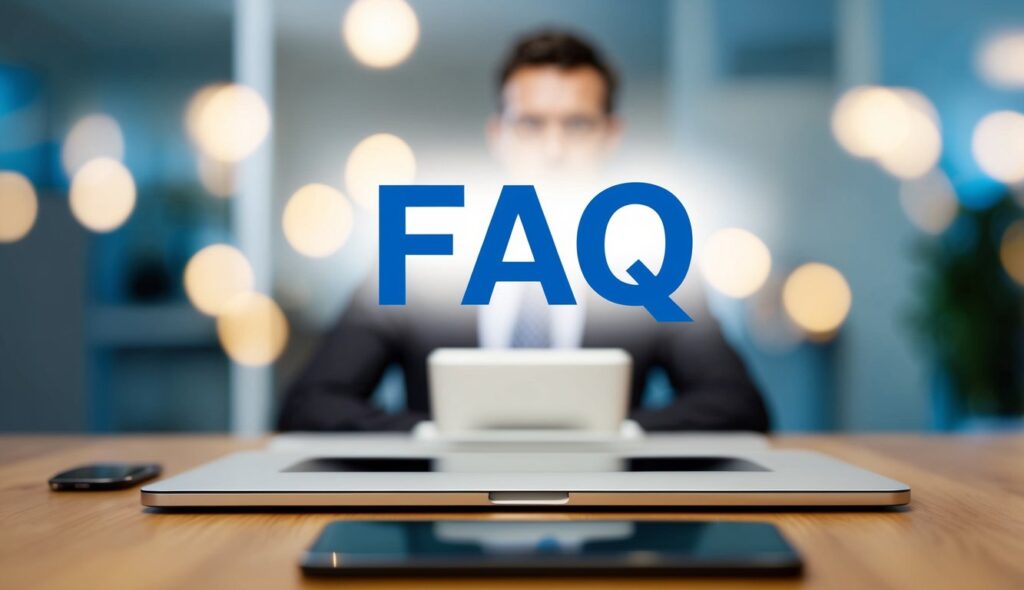
Creditors Voluntary Liquidation FAQs: Essential Information for Business Owners
What Is Creditors’ Voluntary Liquidation (CVL)?
Creditors’ Voluntary Liquidation (CVL) is a formal process for closing an insolvent company. It’s initiated by the directors when they recognise the business can no longer pay its debts.
In a CVL, at least 75% of shareholders must agree to wind up the company. This action demonstrates to creditors that you’re taking responsibility for the situation.
The process involves appointing a licensed insolvency practitioner as liquidator. They’ll manage the orderly closure of your business and sell its assets.
CVL aims to maximise returns for creditors. Any remaining funds after liquidation costs are distributed to them in order of priority.
Your employees will typically be made redundant during a CVL. They can claim unpaid wages and redundancy pay from the government’s Redundancy Payments Service.
A CVL offers protection from creditor pressure and legal action. It also allows you to fulfil your duties as a director of an insolvent company.
By choosing CVL, you’re proactively addressing the company’s financial difficulties. This can be viewed more favourably than waiting for creditors to force the company into compulsory liquidation.
Eligibility Criteria for CVL
Creditors’ Voluntary Liquidation (CVL) has specific requirements companies must meet to initiate the process. These criteria ensure only truly insolvent businesses use this option.
Insolvency Tests for CVL
To be eligible for CVL, a company must fail either the cash flow test or the balance sheet test. The cash flow test assesses if the business can pay its debts as they fall due. This includes current and future liabilities.
The balance sheet test examines if the company’s liabilities exceed its assets. If so, it’s considered insolvent.
Directors must have evidence to support their insolvency claim. This often includes:
- Financial statements
- Cash flow forecasts
- Aged creditor lists
- Outstanding tax liabilities
Seek professional advice from an insolvency practitioner, such as Anderson Brookes, to confirm eligibility.
Company Size and CVL
CVL is available to businesses of all sizes, from small enterprises to large corporations. However, the process may vary slightly depending on the company’s scale.
For smaller companies:
- Simplified procedures may apply
- Directors might handle more aspects directly
Larger companies typically face:
- More complex asset liquidation
- Greater scrutiny from stakeholders
Regardless of size, 75% (by value) of shareholders must agree to enter CVL. This applies equally to family-run businesses and public limited companies.
The insolvency practitioner’s fees may also vary based on company size and complexity. Larger firms often require more resources to manage the liquidation effectively.
Free Consultation – advice@andersonbrookes.co.uk or call on 0800 1804 933 our freephone number (including from mobiles).

Initiating Creditors’ Voluntary Liquidation
Creditors’ Voluntary Liquidation (CVL) is a formal process for insolvent companies to wind up their affairs. Directors play a key role in starting the procedure, which involves shareholder approval and appointing a licensed insolvency practitioner as liquidator.
Role of the Board of Directors
As a director, you must recognise when your company is insolvent and cannot pay its debts. The board should meet to discuss the company’s financial situation and vote on whether to propose a CVL.
You have a duty to act in creditors’ best interests once insolvency is apparent. This means stopping trading if continuing would worsen the company’s position.
Directors are responsible for preparing a Statement of Affairs detailing the company’s assets and liabilities. You’ll need to provide this to shareholders and creditors.
Shareholders’ Meeting Procedures
After the board decision, you must call a shareholders’ meeting. Give at least 14 days’ notice, unless 95% of shareholders agree to a shorter period.
At the meeting, present the Statement of Affairs and explain why the company can’t continue trading. Shareholders vote on a special resolution to wind up the company voluntarily.
Shareholders will also be asked to approve the appointment of the Liquidator, which is usually the insolvency practitioner nominated by the board. If shareholders approve the resolutions, you must notify creditors within 14 days. You’ll also need to advertise the resolution in the Gazette.
Appointing a Liquidator
Once shareholders agree to liquidation, the Company enters into liquidation and the liquidator takes control of the company’s affairs.
The director will usually have invited the creditors of the company to hold a meeting to consider the appointment of the liquidator and this usually takes place immediately after the meeting of shareholders. The creditors can question directors about the company’s failure and then have the final say on who will act as liquidator.
You’ll need to provide the liquidator with all company books, records, and assets.
The Liquidation Process
A creditors’ voluntary liquidation involves several key steps to wind up an insolvent company. The liquidator manages the process of valuing and selling assets, receiving creditor claims, distributing funds, and ultimately dissolving the company.
Assets Valuation and Sale
The liquidator begins by taking control of the company’s assets and conducting a thorough valuation. This includes physical assets like equipment and inventory, as well as intangible assets such as intellectual property.
Professional valuers may be brought in to ensure accurate assessments. The liquidator then works to sell these assets, often through auctions or private sales, to generate funds for creditors.
Efforts are made to maximise returns, but quick sales are sometimes necessary to avoid further depreciation. Any ongoing contracts or leases are typically terminated at this stage.
Claims Submission by Creditors
Creditors are formally notified of the liquidation and invited to submit claims. You’ll need to provide details of amounts owed and supporting documentation.
There’s usually a set timeframe for submitting claims, often around 21 days. The liquidator reviews all claims to verify their validity and amount.
Creditors are ranked in order of priority:
- Secured creditors
- Preferential creditors (e.g. employees)
- Secondary preferential creditors (eg. HM Revenue & Customs VAT & PAYE)
- Unsecured creditors
This ranking determines the order of payment from available funds.
Distribution of Proceeds
Once assets are sold and claims verified, the liquidator distributes the proceeds, after payment of their fees and expenses. Secured creditors are paid first from the sale of their security.
Remaining funds are distributed to other creditors based on their priority ranking. You may receive only a portion of your claim if there are insufficient funds to pay all creditors in full.
The liquidator provides a detailed breakdown of distributions to all creditors. This shows how much each creditor received and the percentage of their claim that was satisfied.
Final Report and Dissolution
The liquidator prepares a final report detailing all actions taken during the liquidation. This includes:
- Asset realisations
- Creditor claims and payments
- Any investigations into company affairs
The creditors are given 8 weeks to object to the closure of the liquidation. If no objections are received, the liquidator then files the necessary documents with Companies House to formally dissolve the company.
You’ll receive notice of the company’s dissolution. This marks the end of the liquidation process and the company ceases to exist as a legal entity.
advice@andersonbrookes.co.uk or call on 0800 1804 933

Employee Rights and Claims
Employees have important rights and entitlements when a company enters creditors’ voluntary liquidation. These include potential redundancy payments and claims for outstanding wages and holiday pay.
Redundancy Payments
If you’ve worked for the company for at least 2 years, you may be eligible for redundancy pay. The amount depends on your age, length of service, plus notice period, and weekly pay (capped at £571 as of 2025).
You can claim up to 8 weeks of redundancy pay from the Redundancy Payments Service (RPS). To calculate your entitlement:
- 5 week’s pay for each year of service under age 22
- 1 week’s pay for each year between 22 and 41
- 5 week’s pay for each year aged 41+
Claims must be submitted within 6 months of dismissal. The liquidator will provide the necessary forms and assist with the claims process.
Outstanding Wages and Holiday Pay
You can claim up to 8 weeks of unpaid wages from the RPS, capped at £571 per week. This includes:
- Regular salary/wages
- Overtime pay
- Commission
- Bonuses
You’re also entitled to claim holiday pay for untaken leave, up to 6 weeks’ worth. Any pay in lieu of notice owed may be claimed as well, up to 12 weeks maximum.
To make a claim, complete the CN form provided by the liquidator. The RPS aims to pay claims within 14 days of receiving the completed paperwork.
Director’s Responsibilities and Risks
Directors face significant obligations and potential consequences when a company enters creditors’ voluntary liquidation. Understanding these responsibilities and risks is important for making informed decisions during the process.
Wrongful Trading
As a director, you have a duty to act in the best interests of creditors once insolvency becomes unavoidable. Continuing to trade when there’s no reasonable prospect of avoiding insolvency can lead to wrongful trading accusations.
You must take steps to minimise potential losses to creditors. This includes seeking professional advice promptly and considering all available options. Failure to do so may result in personal liability for company debts.
Keep detailed records of board meetings and decisions made during this period. These can serve as evidence of your efforts to protect creditors’ interests if questioned later.
Personal Guarantees and Liability
Personal guarantees can significantly impact your financial situation during liquidation. These are agreements where you’ve personally promised to repay certain company debts if the business can’t.
Common examples include:
- Bank loans
- Lease agreements
- Supplier contracts
Personal guarantees remain enforceable even after liquidation. Creditors may pursue you directly for repayment, potentially putting your personal assets at risk.
You might also face disqualification from acting as a director for up to 15 years if found guilty of misconduct. This can severely limit your future business opportunities.
Seeking legal advice early can help you understand your exposure and explore options for mitigating personal financial risks.
Tax Considerations in CVL
Creditors’ Voluntary Liquidation (CVL) has significant tax implications for companies and directors. Understanding these can help maximise tax efficiency and avoid potential pitfalls during the liquidation process.
Corporate Taxes and Debts
When a company enters CVL, it remains liable for outstanding tax debts. HMRC is often a major creditor in liquidations. The liquidator must settle any Corporation Tax liabilities up to the date of liquidation. They’ll prepare final accounts and submit a Company Tax Return.
VAT obligations continue until the company is formally dissolved. The liquidator must cancel VAT registration and file final returns. Any VAT refunds due may be used to offset other tax debts.
PAYE and National Insurance contributions must be paid up to date. The liquidator will issue P45s to employees and submit final returns to HMRC.
Tax Relief and Losses
CVL can provide tax relief opportunities. Trading losses may be carried back and set against profits from previous years, potentially generating tax refunds. Capital losses on asset disposals can be offset against capital gains.
Directors may benefit from Entrepreneurs’ Relief (now Business Asset Disposal Relief) on distributions from the liquidation. This can reduce Capital Gains Tax to 10% on qualifying assets up to a lifetime limit of £1 million.
Bad debt relief may be available for creditors of the liquidated company. They can claim relief on their own tax returns for unrecoverable debts.
Advantages and Disadvantages of CVL
A Creditors’ Voluntary Liquidation (CVL) offers several benefits for insolvent companies. It allows for an orderly closure and asset liquidation to repay debts.
Directors can demonstrate responsibility by initiating the process themselves. This may protect them from accusations of wrongful trading.
CVL provides a clear endpoint, giving closure to directors and employees. It can relieve the stress of managing a struggling business.
Creditors may recover some of their debts through the liquidation process. The involvement of a licensed Insolvency Practitioner ensures fair treatment.
On the downside, CVL results in the company’s closure. This means job losses for employees and the end of the business.
The process can be costly, requiring fees for the Insolvency Practitioner and legal advisors. These expenses are paid from the company’s remaining assets.
CVL is a public process, advertised in The Gazette. This publicity may impact directors’ reputations and future business ventures.
Shareholders typically lose their investments in the company. Any remaining assets after creditor payments are unlikely to provide returns.
Directors may face restrictions on future company directorships if found guilty of misconduct during the CVL investigation.

Frequently Asked Questions
Creditors’ Voluntary Liquidation (CVL) involves several key considerations for company directors and shareholders. Understanding the process, timeframes, consequences, and alternatives is key for making informed decisions about a company’s future.
What are the potential benefits and drawbacks of entering Creditors’ Voluntary Liquidation?
Benefits of CVL include orderly closure of an insolvent company and protection from creditor pressure. It can also provide a fresh start for directors.
Drawbacks may include loss of control over the business and potential damage to personal credit ratings. Job losses for employees are also a likely outcome.
What is the usual timeframe for the process of Creditors’ Voluntary Liquidation?
The initial CVL process typically takes 2-3 weeks to set up. This includes calling shareholder meetings and appointing a liquidator.
The full liquidation can take 6-24 months, depending on the complexity of the company’s affairs and asset realisation.
What consequences do directors face when their company undergoes liquidation?
Directors may face investigation into their conduct leading up to the liquidation. If found guilty of wrongful trading, they could be disqualified or held personally liable for company debts.
However, if directors act responsibly and initiate CVL in a timely manner, they can often avoid serious consequences.
How does Creditors’ Voluntary Liquidation differ from Members’ Voluntary Liquidation?
CVL is for insolvent companies, while Members’ Voluntary Liquidation (MVL) is for solvent companies. In CVL, creditors have more control over the process and liquidator appointment.
MVL is typically faster and less complex, as the company can pay all its debts in full.
What is the most cost-effective method for a company to undergo liquidation?
CVL is often the most cost-effective option for insolvent companies. It avoids court fees associated with compulsory liquidation.
For solvent companies, MVL can be more tax-efficient, particularly for distributing assets to shareholders.
What are the main reasons that lead a company to choose the route of liquidation?
Common reasons include:
- Persistent cash flow problems
- Mounting debts and pressure from creditors
- Loss of major contracts or customers
- Inability to pay taxes or other statutory obligations
Market changes or increased competition can also make a business unviable, leading directors to consider liquidation.
Still have questions? Contact us why not look at our Insolvency Glossary for more answers.
CVL Google Reviews

&


